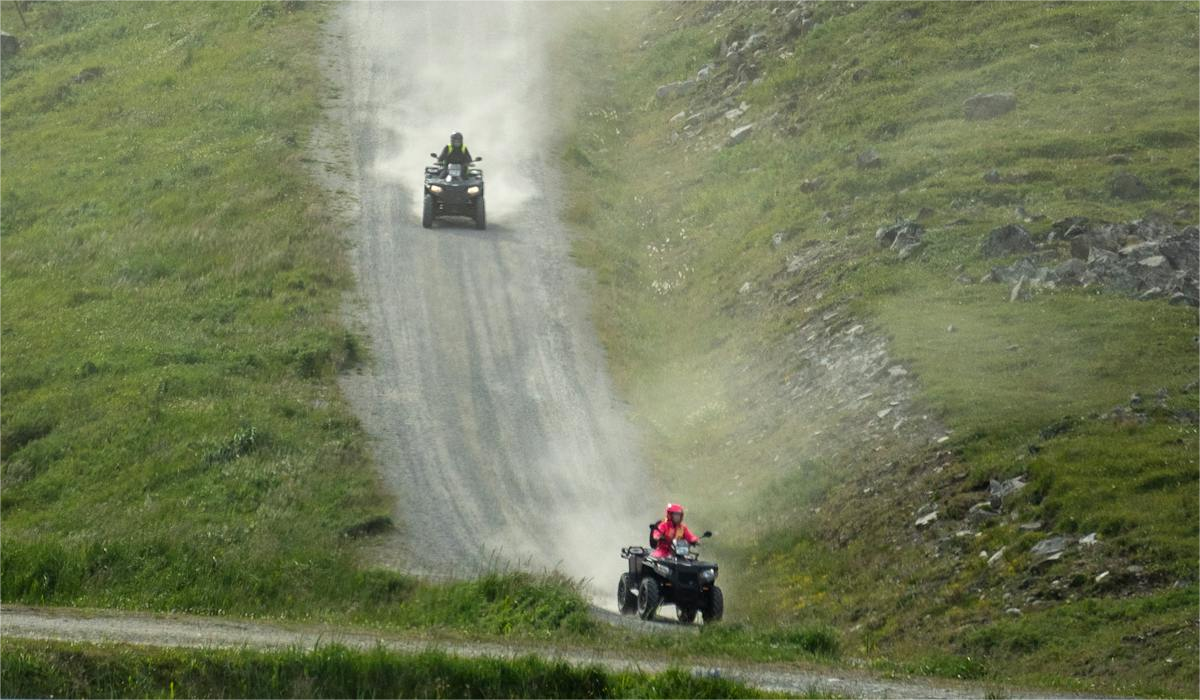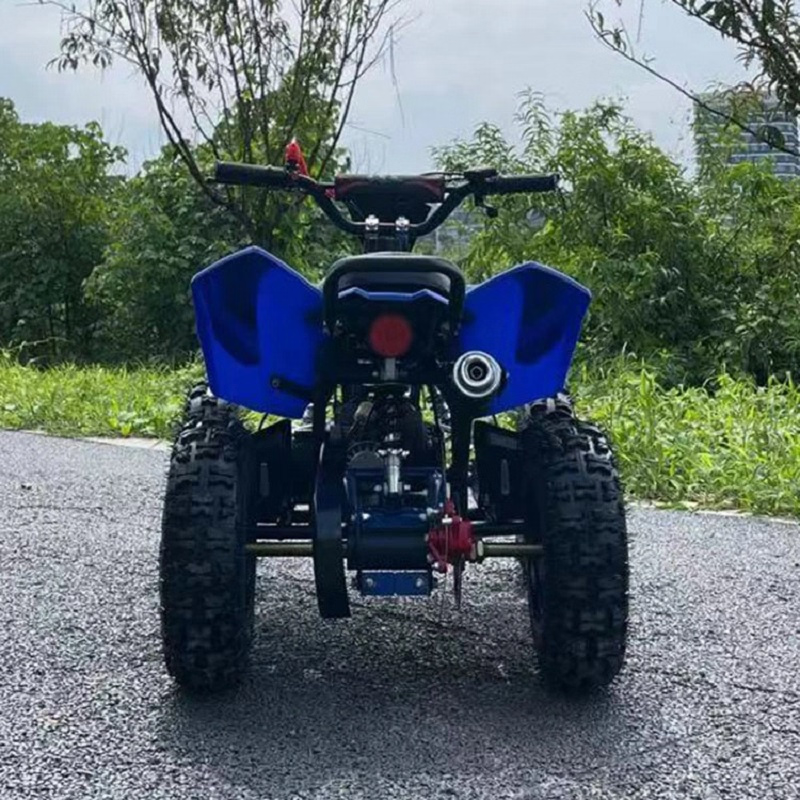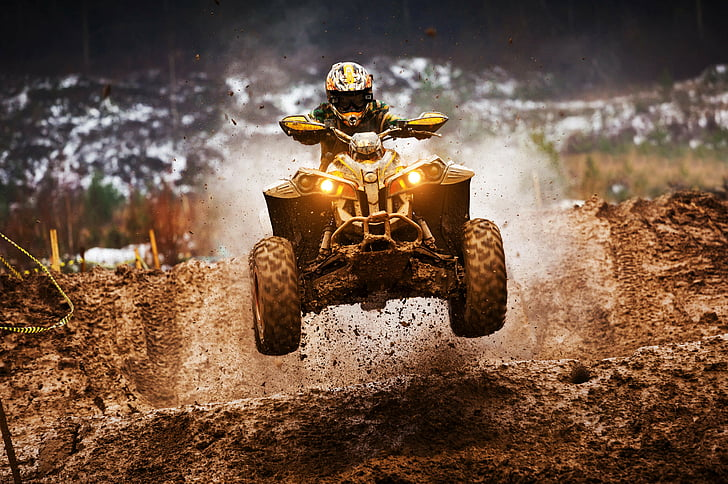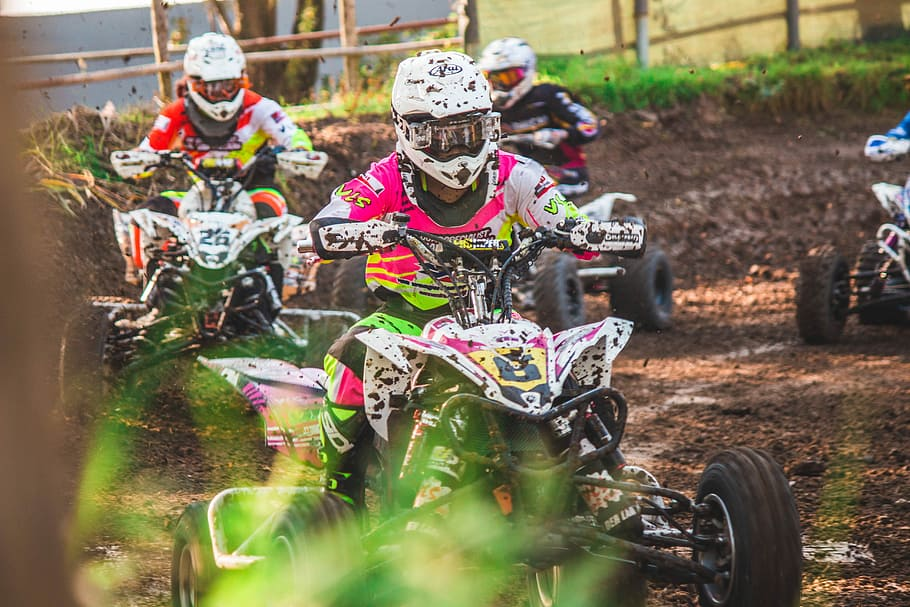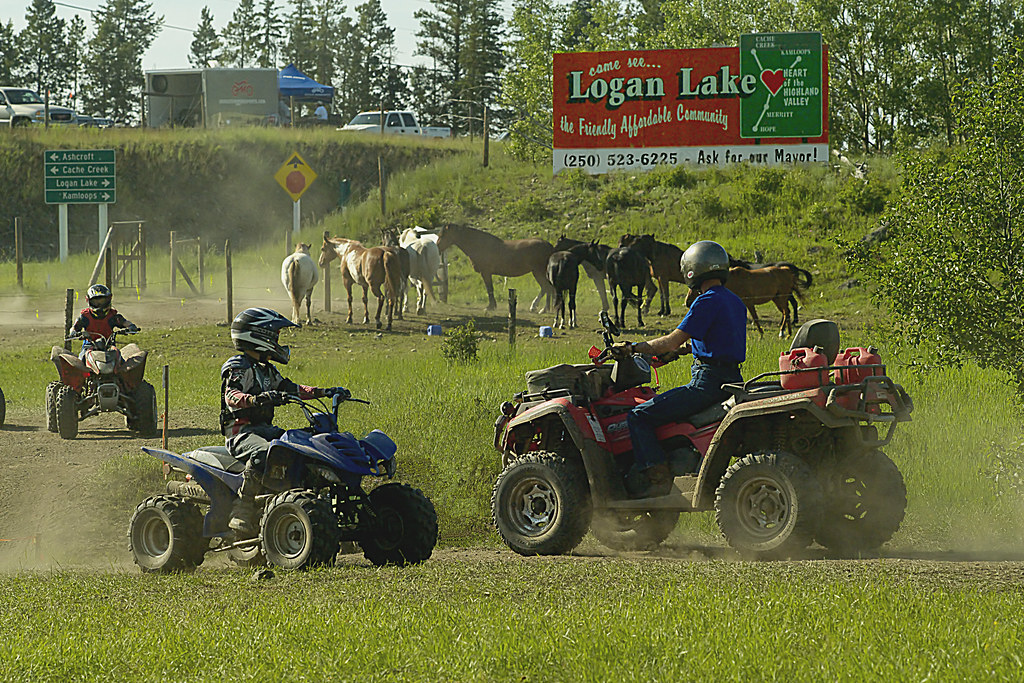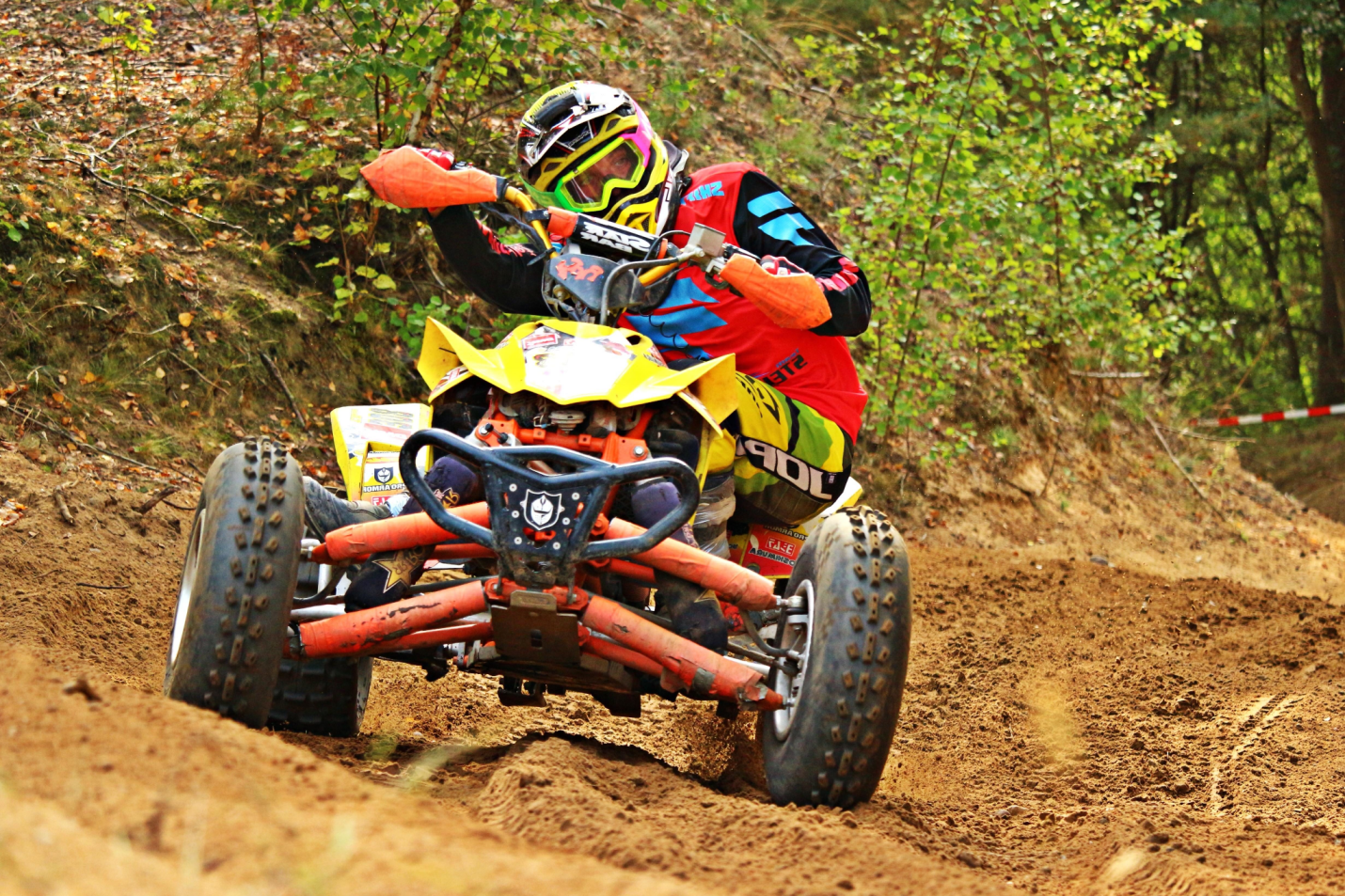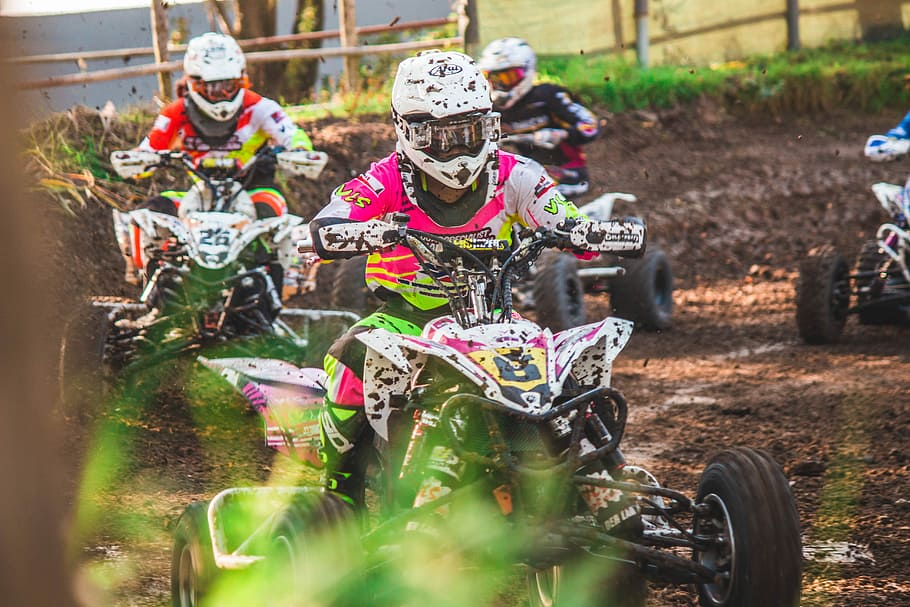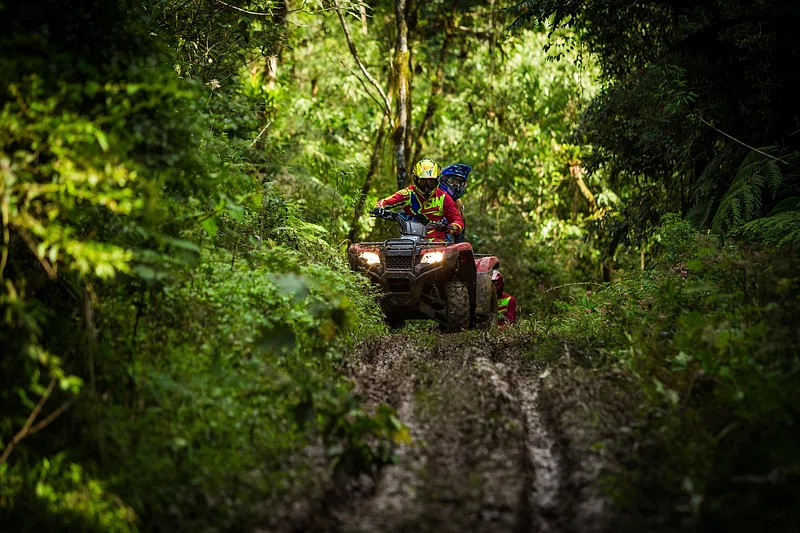Trail riding on an ATV is a thrilling outdoor activity that brings fun and adventure for all ages.
Whether you're an experienced rider or a parent introducing kids to ATV riding, proper preparation is essential to ensure a safe and enjoyable experience.
This guide provides detailed insights, especially for young riders, to help you maximize your trail rides.
If you're looking for the perfect beginner ATV, the Sahara 40 Mini Quad is a reliable option for kids ages 8-12.
Its manageable features and safety-first design make it an excellent choice for young trail adventurers.
Pre-Ride Safety Checklist
Essential Safety Gear
Safety gear is the first and most critical step before trail riding. Ensure riders are equipped with:
• A properly fitted helmetto protect against head injuries. Helmets should meet safety standards and fit snugly.
• Eye protection, such as goggles, to shield from debris, wind, and sunlight.
• Protective clothing, including long-sleeve shirts, durable pants, and gloves for skin protection.
• Sturdy, closed-toe shoesthat provide grip and shield feet from injuries.
Teaching kids the importance of wearing safety gear builds lifelong habits.
Vehicle Inspection
A well-maintained ATV reduces the risk of accidents. Before hitting the trail, check:
• Tire pressure and conditionto ensure stability. Worn or under-inflated tires can cause mishaps.
• Brake functionto confirm the vehicle can stop effectively.
• Lights and signals, especially if you'll be riding during low-light conditions.
• Fuel levelto avoid interruptions on the trail.
Regular vehicle inspections keep your ATV in top shape and extend its lifespan.
Trail Safety Equipment
Carry essential items to handle unexpected situations:
• A first aid kit for minor injuries.
• A basic tool kit to address mechanical issues like loose screws or chains.
• A communication device, such as a phone or walkie-talkie, to stay in contact with others.
• Emergency suppliesfor longer rides include snacks, water, and a flashlight.

Understanding Trail Difficulty Levels
Beginner Trails
Beginner trails are the safest option for young riders or those just starting. Look for:
• Wide, clear paths that are easy to navigate.
• Minimal obstacles, such as rocks or roots.
• Gentle slopes to help riders build confidence.
• Trails that match the capabilities of the Sahara 40 Mini Quad, which has a max speed of 18 mph, ensuring safe and controlled rides.
Intermediate Features
As riders gain experience, they can tackle trails with:
• Moderate obstacles to improve navigation skills.
• Some elevation changes, which add a bit of challenge.
• Basic technical sections, such as narrow paths or sharp turns.
Trail Ratings
Trail markers are key to selecting the right path. They often indicate the difficulty level through colors or symbols. Teach kids how to read these markers to ensure they choose trails suited to their skills and vehicle capabilities.
Weather and Trail Conditions
Weather Considerations
Weather plays a significant role in trail riding safety. Plan ahead by:
• Checking forecasts to avoid rain or extreme heat.
• Preparing for seasonal challenges, such as muddy trails in spring or icy patches in winter.
• Dressing appropriately for the temperature to ensure comfort and safety.
Trail Surface Types
Different trail surfaces require different riding techniques. Common types include:
• Dirt paths, which offer good traction but can become muddy after rain.
• Grassy areas, where traction may vary depending on wetness.
• Gravel surfaces, which can be loose and require careful control.
Adapting to Conditions
Always adjust your riding based on the trail conditions:
• Slow down on slippery or uneven surfaces.
• Use smooth, controlled movements to maintain balance.
• Postpone rides if conditions are too challenging for the rider's skill level.

Trail Riding Techniques for Young Riders
Basic Position and Control
Teach kids to:
• Sit upright for better visibility and control.
• Place hands firmly on the handlebars and feet on the footrests.
• Distribute weight evenly to maintain balance on uneven terrain.
Navigating Common Obstacles
The Sahara 40 Mini Quad is designed to handle basic trail obstacles, including:
• Small bumps and dips that teach riders to adjust speed.
• Gentle turns, which improve steering and handling skills.
• Inclines, where smooth throttle control helps maintain momentum.
The quad's dual suspension system ensures a smoother ride, making it ideal for kids learning to navigate trails.
Trail Etiquette and Rules
Basic Trail Rules
Respect for others ensures a safe and enjoyable experience. Follow these rules:
• Yield to hikers and bikers when necessary.
• Maintain a reasonable speed limit, especially on crowded trails.
• Follow group riding protocols, such as staying in single file on narrow paths.
Environmental Responsibility
Preserving the environment is everyone's duty. Teach kids to:
• Stay on marked trailsto prevent erosion.
• Avoid disturbing wildlife and leave no litter behind.
• Minimize noise to respect other trail users.
Communication
Clear communication improves group safety:
• Use hand signals to indicate turns or stops.
• Maintain proper spacing between riders.
• Discuss emergency procedures before the ride.
Planning Your Trail Ride
Route Planning
A well-planned route ensures a smooth experience. Consider:
• Using trail maps to choose paths suitable for your group.
• Estimating the total ride time, including rest stops.
• Identifying scenic spots or areas for breaks.
Group Organization
Group rides are safer and more enjoyable with proper organization:
• Implement a buddy system to ensure no one is left behind.
• Assign an adult to supervise young riders.
• Establish a communication plan for larger groups.
Emergency Preparedness
Prepare for unforeseen situations by:
• Identifying exit routes and alternative paths.
• Sharing emergency contacts with the group.
• Choosing meeting points in case riders are separated.
Trail Riding with the Sahara 40
The Sahara 40 Mini Quad is a versatile and beginner-friendly ATV, designed to make trail riding safe and fun atv for kids ages 8-12.
Perfect for Beginners
Its 40cc 4-stroke engine provides steady, manageable power, making it ideal for learning. With a range of up to 30 miles per tank, the Sahara 40 is perfect for day-long adventures.
Safety Features in Action
The Sahara 40 includes several safety enhancements:
• An emergency kill switch for immediate stops.
• A speed limiter that allows parents to control the maximum speed.
• Dual disc brakes for reliable stopping power.
Terrain Handling
Thanks to its robust front and rear suspension, the Sahara 40 easily handles:
• Uneven dirt paths and small bumps.
• Moderate slopes and gentle inclines.
• Gravel trails, providing a stable and smooth ride.
Post-Ride Maintenance
Immediate Post-Ride Check
After each ride, clean and inspect the ATV:
• Remove dirt and debris to prevent damage.
• Check tires, brakes, and lights for any wear or issues.
• Refill the fuel tank if necessary.
Maintenance Schedule
Regular maintenance keeps the ATV in top shape:
• Clean and lubricate moving parts after every few rides.
• Conduct monthly checks of the engine, chain, and tires.
• Schedule professional servicing periodically.
Long-term Care
For long-term care:
• Store the ATV in a dry, secure place to prevent rust.
• Cover it with a protective sheet during off-seasons.
• Replace worn-out parts promptly to maintain performance.
Conclusion
Trail riding with an ATV is an exciting way for kids to enjoy the outdoors and develop new skills.
Proper preparation, including safety gear, vehicle maintenance, and understanding trail conditions, ensures a safe and enjoyable experience.
With its beginner-friendly features, the Sahara 40 Mini Quad makes an excellent choice for kids aged 8-12.
Its safety-first design and reliable performance make it the perfect companion for young adventurers.
Ready to explore the trails? Equip your child with the Sahara 40 Mini Quad and make their next ride an unforgettable experience!

